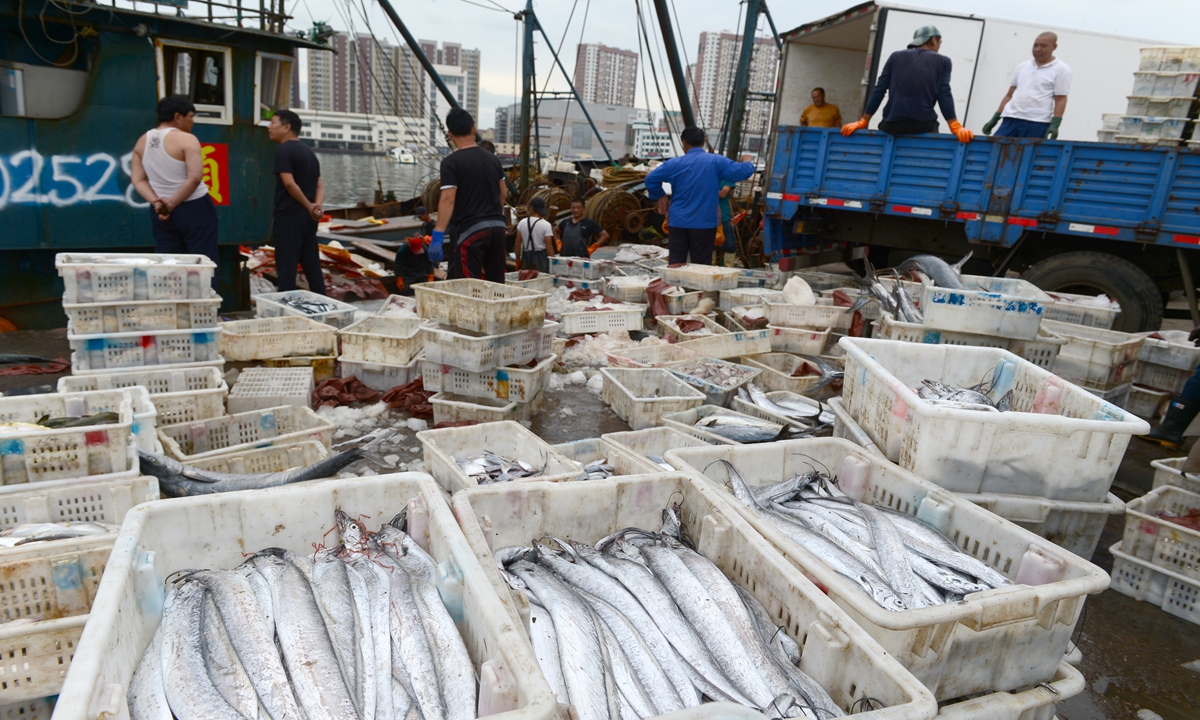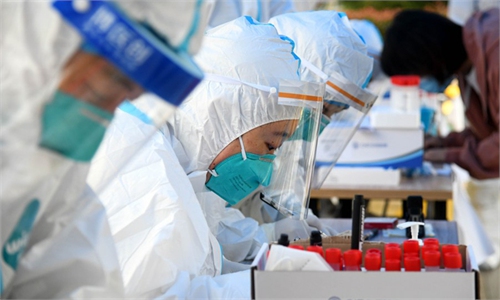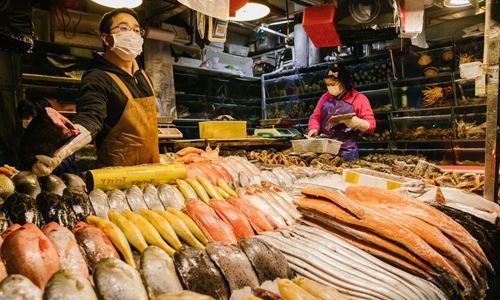
Photo: cnsphotos
Mounting evidence and studies point to imported cold-chain products as the source of COVID-19 flare-ups in the Chinese cities of Beijing and Qingdao, a finding that one Chinese virologist said may help solve the puzzle of the coronavirus origin.
Scientists from Tsinghua University, the Beijing Center for Disease Prevention and Control, the Chinese Academy of Medical Sciences and other institutes published a paper last week in National Science Review, a publication under the Chinese Academy of Sciences. The paper shed light on the mystery of the viral origin that caused an outbreak in Beijing's Xinfadi market.
After comparing the nucleic acid sequencing and viral genome sequencing of COVID-19 patients with environmental and food samples from the Xinfadi market, scientists came to the conclusion that coronavirus from imported cold-chain food is very likely to have been the cause of the Beijing outbreak, and cold-chain transportation has become a new route for viral transmission.
Epidemiologists found employees in Xinfadi's beef and lamb sections were among the earliest to show symptoms, and five customers who contracted the virus previously had visited the section. However, neither the employees nor the customers had any contact with confirmed or suspected COVID-19 cases, nor had they visited high-risk areas.
The survey further suggested that employees from the beef and lamb sections had contact with imported salmon. A nucleic acid sample from the salmon showed its viral genome sequence had a high level of similarity with those from COVID-19 patients and environmental samples.
Moreover, the viral genome sequence showed a clear mutation compared with those obtained from previous samples in China, a proof that the virus that caused the Beijing Xinfadi outbreak was imported, said the survey.
Last week, the Chinese Center for Disease Control and Prevention (CDC) announced it had detected and isolated living coronavirus in a sample from the outer packaging of imported frozen cod, saying that it showed exposure to virus-contaminated packaging can lead to infection.
Yang Zhanqiu, deputy director of the pathogen biology department at Wuhan University, said that those discoveries together not only proved the risk of imported cold-chain products, but also pushed forward research into the virus' ability to survive, its structure, and most importantly, its origins.
If the gene sequence of the living coronavirus from the Qingdao cold chain matches that in human beings, it may help show the possibility that the virus likely originated from aquatic creatures, not bats or pangolins, Yang said.
He said if the theory stands, it could also refute accusations that use the virus as a tool to throw mud at China. "If an aquatic creature proved to be the host, it may overturn many previous studies of the virus' origin," he said.
Yet virologists said the origin of the latest flare-up in Kashi, Southwest China's Xinjiang Uygur Autonomous Region remains to be determined.
An official from Kashi said on Monday that all the asymptomatic patients found in the city were found have had no contact with cold-chain products, nor with wild animals.
The Wuhan virologist said that it is not certain if the virus that caused the Kashi outbreak was local or imported. More epidemiological surveys need to be done to find out, such as contact with people from other countries, or international flights.




